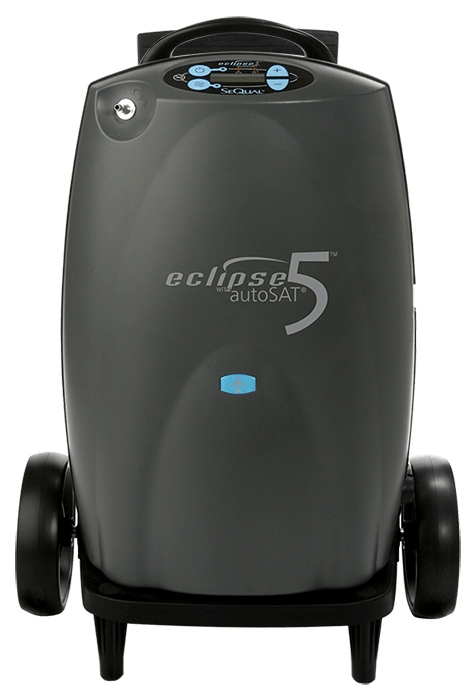
The majority of people aged 65 and over will need long-term care at some point. And while the average price of long-term care varies depending on your location and level of need, expenses can add up. Luckily, many financial products exist to help people save money and plan for care they’ll need down the line. A long-term care annuity could be one solution for saving to pay for senior care. Here, we explain how it differs from other annuities, its benefits and drawbacks, and how to use a long-term care annuity to pay for senior care.
What is an annuity?
Annuities are customizable financial products you get from insurance companies. You pay a premium, either upfront in a lump sum or in payments over time, then receive a stream of income from the insurance company later.
There are two different types of annuities: immediate and deferred. An immediate annuity provides a stream of guaranteed income without a long waiting period. The income payments from a deferred annuity begin after a specified period of time or at some future date. With these general annuities, the annuitant can use the money they receive to pay for any expenses the individual deems necessary.
What is a long-term care annuity?
Long-term care annuities are different because they focus benefits on people who want to pay for senior care services. This is a type of deferred annuity with long-term care features. They are either built into the annuity or added to the contract as a rider. Like standard annuities, long-term care annuities can be funded with an initial lump-sum payment or over time in installments.
These types of annuities can also be fixed or variable in nature. A fixed annuity may be preferable for those who want to fund long-term care, as it is generally considered safe with a guaranteed and predictable flow of returns. Variable annuities carry more risk but present a possibility for higher returns if the underlying investment portfolio performs well.
Long-term care annuities allocate two pools of funds: One pool is for long-term care expenses, which is accessible immediately if required. Another pool for general expenses can be used how the recipient deems necessary; however, it is paid according to the terms and payment schedule in the annuity contract. For long-term care expenses to be paid, the individual must qualify by meeting certain health criteria. Typically, this means demonstrating a need for help with activities of daily living, such as eating, getting dressed, bathing, using the bathroom, and walking around. The health condition can be temporary or permanent.
Payments from the long-term care fund are usually paid as a multiple of the normal monthly payment that would be payable from the annuity for situations other than long-term care. In most cases, if the annuitant qualifies, this means double or triple the regular monthly payout, usually for a limited period of time.
What is the best age to purchase a long-term care annuity?
There are many factors to consider when determining the best age to purchase a long-term care annuity. Still, it is usually best not to start the annuity too young for someone in reasonably good health and a sufficient income from other sources.
Most financial advisors suggest a good age for starting an annuity and obtaining the best possible payout would be between the ages of 70 and 75; however, the best time to purchase an annuity can vary among individuals with different circumstances and needs.
For those younger than the optimal age span, there can be many alternative options, such as a 401(k), IRA, certificate of deposit (CD), or bond. The best investment can vary based on the individual’s distance to expected retirement age, financial means, and long-term priorities.
Pros and cons of a long-term care annuity
Although there are many benefits of using a long-term care annuity to help pay for senior care costs, they may not be a good solution for everyone. Individuals considering the purchase of these contracts should carefully consider both the benefits and drawbacks before moving forward with a purchase.
Pros of a long-term care annuity
- They help someone put away a lot of money for retirement and defer taxes on these funds.
- Unlike other tax-deferred retirement accounts, like 401(k)s and IRAs, long-term care annuities have no contribution limits.
- These policies can serve as a complement to other sources of retirement income, such as Social Security and pension plans.
- Long-term care annuities may work well for someone looking for senior care coverage without purchasing a separate long-term care insurance policy. Annuitants can benefit in two ways: a regular annuity payment that creates dependable retirement income and the option to use it for long-term care expenses if necessary.
- Getting approved for a long-term care annuity may be easier for those with pre-existing health issues than a long-term care insurance policy. Applications requiring the disclosure of health information are required with both policies. Still, many conditions that prevent approval of a long-term care insurance policy will not impact approval for an annuity. Certain conditions, however, such as Parkinson’s disease, may prevent eligibility for coverage with either a long-term care annuity or a long-term care insurance policy.
- Long-term care annuities could be easier on a person’s financial budget than long-term care insurance. Long-term care insurance premiums are dependent on several factors, including the applicant’s place of residence, age, gender, whether coverage is requested for just the applicant or the applicant’s spouse as well, the length of benefit payouts desired, and the amount of benefit to be paid. Age and overall health can affect the premium for long-term care annuities, but it may cost less than a long-term care insurance policy.
Drawbacks of a long-term care annuity
- The first and most basic principle to understand is that any type of annuity can be complex. Potential annuitants should talk with the provider and fully understand the policy terms before deciding.
- Individuals may be required to make a large upfront premium payment to purchase the policy. The insurance company will calculate the amount of that payment based on the applicant’s risk or what they consider the senior care needs will be for that individual at some future time. Finding the funds to purchase the policy could be difficult, especially if the applicant doesn’t have a significant savings account. Selling investments or withdrawing money from a 401(k) or IRA may be possible, but there may be tax ramifications depending on individual circumstances.
- There may be tax implications involved in various aspects of an annuity policy. Before deciding to purchase an annuity, individuals should know how distributions, early withdrawals, and monies left to heirs are taxed.
- Fees are typically embedded in the contract, which can vary from insurer to insurer. These fees can add up. Anyone considering the purchase of an annuity, like any other contract, should review the fee disclosures and compare the fees of similar annuities from other companies.
- The annuity’s guarantees are only as strong as the financial strength of the insurer issuing the contract. Annuities are not backed by the FDIC (Federal Deposit Insurance Corporation) like bank accounts.
- Inflation can erode the value of annuities, like many other investments. Those considering an annuity should check to see if the insurance company offering the policy has provisions to adjust for inflation, such as an inflation protection rider or cost-of-living adjustment rider.
Long-term care annuities can work well for someone looking to protect their retirement nest egg from being drained by long-term care expenses. But, it is generally not advisable to tie up most of one’s assets in an annuity since the capital is no longer liquid once the payment is made. Additionally, although the income is fixed, it will inevitably lose purchasing power over time due to inflation. But this product does present two significant benefits to the individual looking forward: a monthly annuity payment that can be used to enjoy retirement living, and the recipient can access long-term care benefits if needed.








